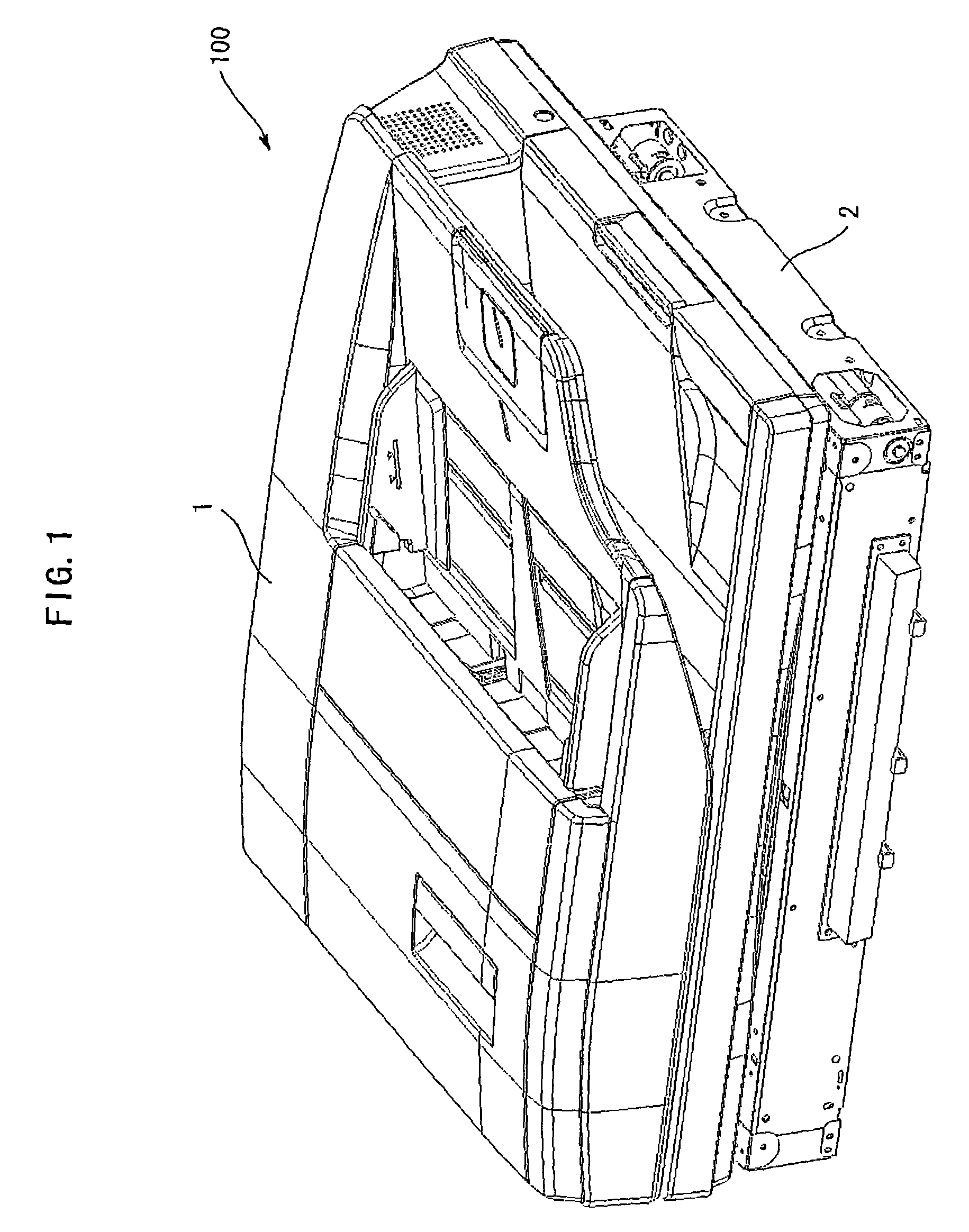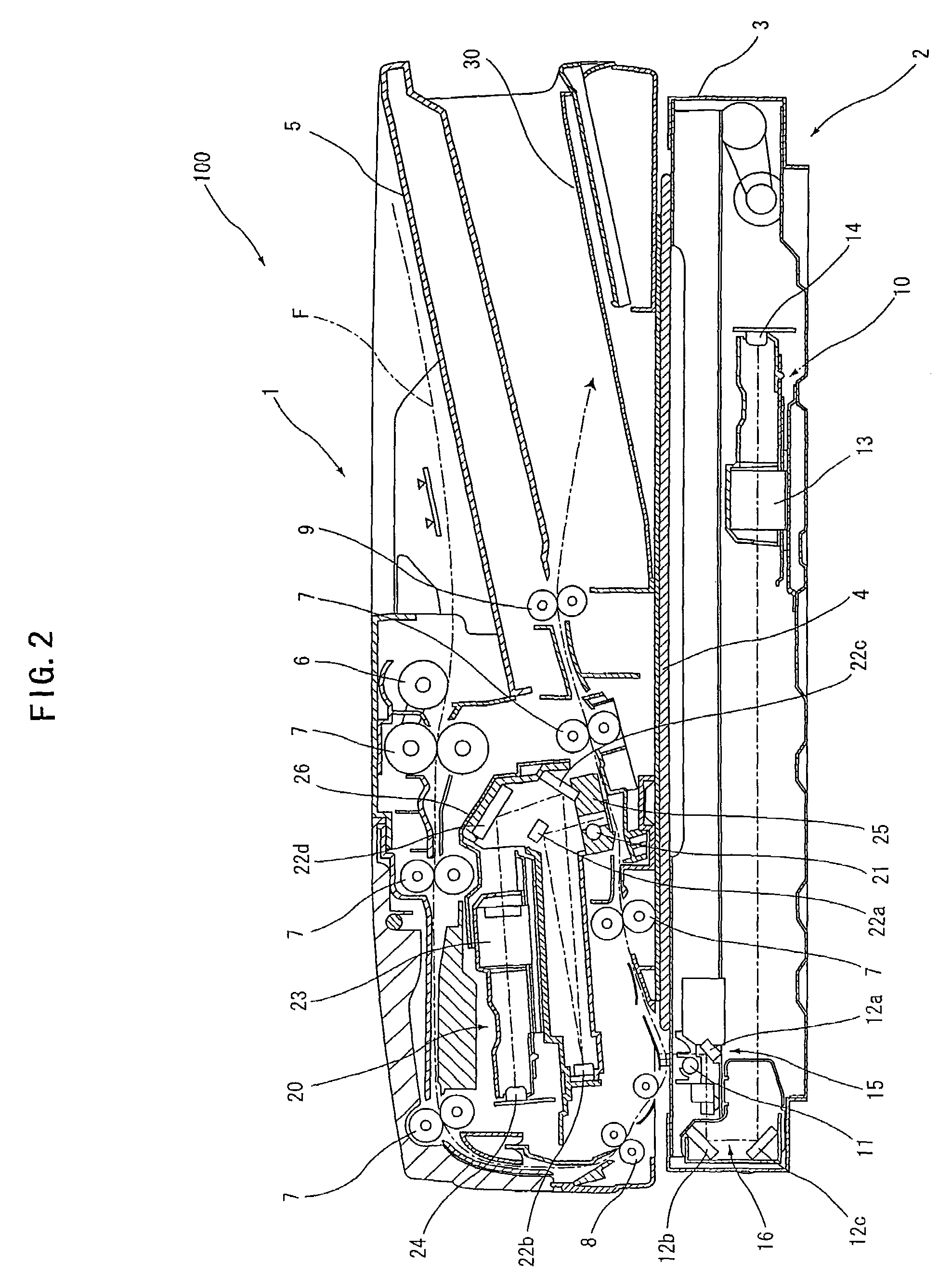Document reader
a document reader and document technology, applied in the field of document readers, can solve the problems of high possibility of document jam, high time required for reading the images formed on both sides, and restricting the installation space or durability against vibration, and achieve the effect of easy maintenan
- Summary
- Abstract
- Description
- Claims
- Application Information
AI Technical Summary
Benefits of technology
Problems solved by technology
Method used
Image
Examples
Embodiment Construction
[0036]A document reader according to the present invention comprises: document feeding means for conveying a document along a document conveyance path; first image reading means for reading an image formed on a first side of the conveyed document; and second image reading means for reading an image formed on a second side of the conveyed document, wherein each of the first and second image reading means is of an optical reduction system constituted of a light source, a mirror, a lens and an image sensor, and the second image reading means is unified into a single assembly including at least the mirror, the lens and the image sensor, to be thus detachably attached, as a single unit, to the document feeding means.
[0037]The configuration of the document feeding means in the document reader according to the present invention is not particularly limited as long as the document feeding means can convey the document along the document conveyance path. A specific example is a known automati...
PUM
 Login to View More
Login to View More Abstract
Description
Claims
Application Information
 Login to View More
Login to View More - R&D
- Intellectual Property
- Life Sciences
- Materials
- Tech Scout
- Unparalleled Data Quality
- Higher Quality Content
- 60% Fewer Hallucinations
Browse by: Latest US Patents, China's latest patents, Technical Efficacy Thesaurus, Application Domain, Technology Topic, Popular Technical Reports.
© 2025 PatSnap. All rights reserved.Legal|Privacy policy|Modern Slavery Act Transparency Statement|Sitemap|About US| Contact US: help@patsnap.com



